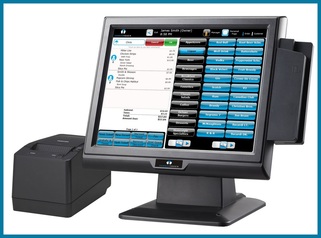 The customer is always right, even when they butcher an order beyond belief. Substituting chicken for beef, changing the sides, adding an extra sauce and asking for the order in a larger size all at once; it happens. Servers and chefs bend over backwards to accommodate these requests, but the restaurant may eat the cost in the end because their point of sale [POS] system can’t account for all those ad hoc changes. The answer lies in gearing your POS system to account for extraneous costs, as well as detect how often customers are making menu substitutions. These patterns are tracked through monthly sales reports. These reports are usually PDF’s or excel documents that track the sales and total revenue from each menu item, grouped by category. Gearing your POS system to correctly categorize ‘special orders’ allow these sales reports to accurately monitor costs, sales and profits. POS alignment can certainly seem like a complex issue on the surface, but it’s much simpler than it sounds. To demonstrate the process, I’ll go over a consulting project that I recently completed for an independent pizza restaurant, where POS alignment was a significant issue, but also easy to solve. The restaurant’s menu consisted of all the essentials you’d find in a quality pizza spot: basic and specialty pizzas, pasta, sandwiches, salads, appetizers and desserts. Their monthly sales reports reflected each item’s sales, grouped by menu category. The problem came with combos and bundled items, as well as menu additions and substitutions. Here are a few things to avoid...
Two menu categories were sometimes grouped in the same line item. For example, the restaurant had an appetizer of three meatballs, as well as the option to add three meatballs to pasta. On the sales report, they both showed up as ‘3 meatballs’ in the pasta section, making it impossible to determine how often the appetizer was selling vs. the add-on. To fix the above problems, try reformatting your POS system to accommodate the following…
Aligning POS data allows owners to make key decisions to change ingredient mixes and prices, as well as add and remove menu items in their entirety. These decisions increase customer satisfaction, as well as front-of-house and kitchen efficiency, which all goes straight to that magical word: profit.
1 Comment
|
AuthorBenjamin Brown is a seasoned restaurant writer and hospitality consultant, serving up SoCal's hottest food news and reviews. Categories
All
Archives
June 2021
@Foodie_Biz |
|
Home
About
Blog
Consulting Tips
Contact
Legal
|
Foodie Biz provides restaurant news and reviews for the food community, as well as consulting advice for restaurant owners and other hospitality professionals.
Contact Foodie Biz for media opportunities and freelance consulting projects. Contact Foodie Biz |



